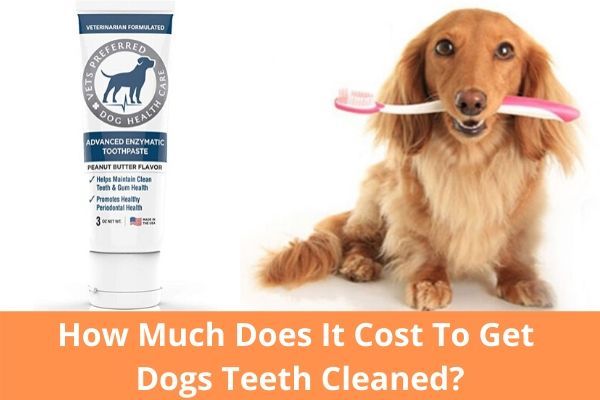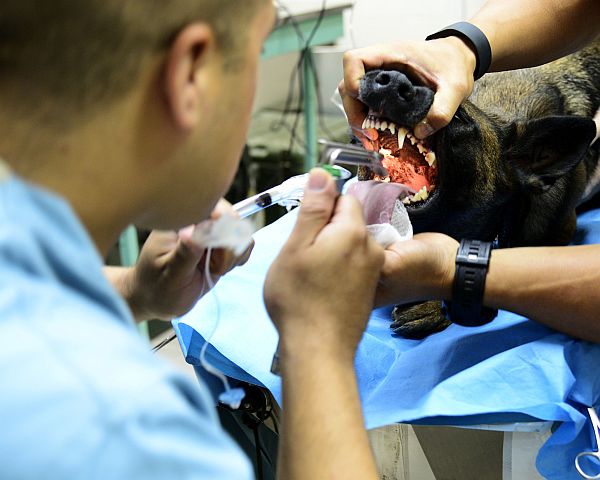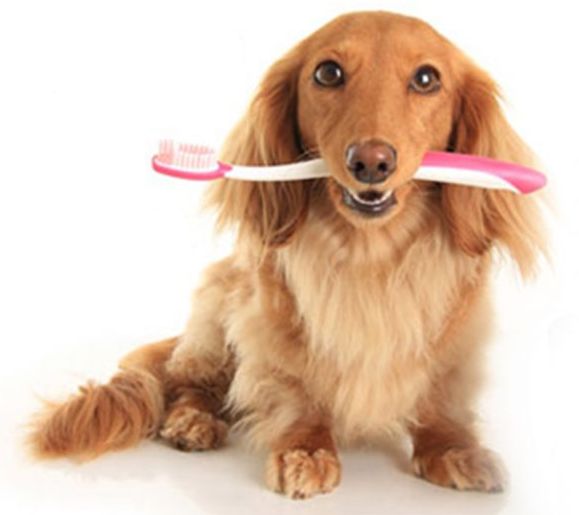Any dog owner, at some point, will get concerned about the dental health of their pet. and may find himself faced with the question: how much does it cost to get dogs teeth cleaned?
Your dog’s dental health is important to his or her overall care and well being. In this informative blog post, we’ll break down the pricing of an average dog teeth cleaning.
It is common for pet parents not to realize that the oral health of their dog is crucial to their overall wellness. Even with regular brushings and dental treats, it can take as many as three years before signs of periodontal disease and other oral health issues become apparent.
It is common for pet parents not to realize that the oral health of their dog is crucial to their overall wellness. Even with regular brushings and dental treats, it can take as many as three years before signs of periodontal disease and other oral health issues become apparent.
Treating periodontal disease in dogs is as important as treating it in humans.
Fortunately, cleaning your dog’s teeth is something that most vets can do.
But what exactly does a cleaning entail? and how much will it cost to get the job done?
How Much Does It Cost To Get Dogs Teeth Cleaned?
The average cost of getting your dog’s teeth cleaned is $200 for a standard cleaning. However, you might end up paying more or less depending on a variety of factors like:
- Location
- Single veterinarian/veterinary clinic (An office of vets might be cheaper than one doctor)
- Company policy
- Size and age of dog
- Bloodwork
- X-rays
- Extractions
- Anesthesia
- Aftercare
- Medications
You might not have to pay for all these costs if your dog has a healthy mouth. If your pet will let the vet work on his teeth without problems, you can usually get away without having to use anesthesia, which makes the cleaning cost a lot cheaper.
There are two types of dental cleaning: Anesthesia teeth cleaning and anesthesia-free teeth cleaning.
| Anesthesia-Free Teeth Cleaning | Anesthesia Teeth Cleaning |
|---|---|
| Cost around $200 | Cost between $500 and $3,000 |

Anesthesia-Free Cleaning
This method is good for dogs who are okay with having a stranger’s hand in their mouth for long periods of time.
For an anesthesia-free cleaning, it will run you between $100-$300, which is much less than it would cost if anesthesia is needed. Since your dog won’t be getting put to sleep, he won’t need to have any blood work done. The cleaning takes far less time and fewer staff members are needed. Plus, your pet can go home right after the cleaning is done and no recovery time in the kennel is needed. You’ll save money on that and not having to pay for the anesthesia medication.
Keep in mind, not all dogs can sit still and calm as they need to be during the cleaning, so it might not be the best choice for your dog.
The procedure is simple and takes 45 minutes to an hour. The professional will scrape your dog’s teeth with a special tool to remove any plaque buildup. It doesn’t take a lot of time so you typically won’t have to pay for overnight care or follow-up visits.
And because it’s not intrusive, it will be painless. So you shouldn’t need to pay for medications afterward. If you provide regular dental checkups every six to twelve months, you can keep your pet’s mouth healthy, which can prolong her life and save you a ton of money.
Anesthesia Cleaning
If your dog is going to need extractions, oral surgery or has to be put to sleep before he can be examined, your expenses are going to be anywhere from $500 all the way up into a few thousand. You could easily end up spending $3,000 on your pet’s dental treatment if you do not provide the proper preventative care.
Anesthesia cleaning is the way to go if your dog’s teeth need a deeper and thorough cleaning. it cleans below the gumline instead of focusing only on the surface of the teeth. This procedure will be the most expensive due to the need for anesthesia.
Before getting anesthesia, your dog will need to have blood work and x-rays done to ensure he is safe to be put under. If there’s a need for serious surgery, you may need to come back in for additional visits or follow-up care, which can rack up the costs significantly.

The Anesthesia Process
When your dog is given an anesthesia cleaning, she will be put to sleep and intubated. She will receive continuous oxygen and anesthetic gas throughout the procedure. The technician might also hook your dog up to an intravenous catheter, which will administer fluids for blood pressure and organ maintenance.
While your dog is asleep, the vet will use a tool called an ultrasonic scaler, which vibrates at high speeds, to remove large chunks of tartar and plaque. Then a hand scaler is used to clean under the gumline and on all sides of the teeth. The doctor will also measure the depth of the pockets between the gum and tooth to test for periodontal disease using a tool called a dental probe.
Once all the cleaning is done, the vet rinses your dog’s mouth and polishes each tooth to seal out any future buildup. A final rinse is done and then a fluoride treatment is applied. Your pet is then woken up and watched for any adverse reactions to the anesthesia. If everything is fine, your dog gets to go home.
After Anesthesia
If your pup has required anesthesia for his dental procedure, it’s important to follow your veterinarian’s discharge instructions for quick recovery. Please note that it can take up to five days for the medicine to completely leave your pet’s system.
If your dog is still acting weird three or four days after getting his teeth cleaned, you shouldn’t be too concerned. However, if it continues for longer than a week, consult with your pet’s doctor. You might notice that your dog is struggling to eat.
A lot of pet owners soften their dog’s kibble to make it easier to consume. Or you could switch to a wet dog food diet short-term; not all dogs’ digestive systems can handle canned dog food so this is something to consider before switching.
If your pet was prescribed any medication after his dental procedure and anesthesia, remember to give it to her as directed. Be vigilant about your pet’s medicine, just as you would your own. If you have trouble getting your dog to take their medication, consider stuffing it into a soft snack like cheese or crush it into a powder to mix into their dinner- as long as it’s a small portion they’ll complete it in one sitting.
Additional Costs of Dental Cleaning Procedures
As with your own dental care, you might incur extra costs if you have to have more specific procedures done than just a cleaning. X-rays, extractions, and root canals cost even more. As you can see, it’s cheaper to provide proper dental care than to wait until there’s a problem.
Here’s a breakdown of other costs you might be charged:
- Digital x-rays – $500 to $1,000
- Oral radiography – $150-$200 and up
- Tooth extraction simple – $10-$15
- Tooth extraction elevated – $25-$35
- Tooth extraction with a drill – $100 or less
- Root canal (charged by root) $1,000-$3,000
What’s Included in a Dog Teeth Cleaning?
A full cleaning service from a reputable vet will include a bit of testing beforehand.
Dog teeth cleaning will include dental probing, polishing, scaling, charting their teeth and care before, during and after the procedure.
From beginning to end your vet might need to do an oral and dental exam, physical exams, bloodwork, oral radiography, X-rays, and pre-anesthesia if needed.
During the procedure, there might be a need for IV fluids, catheter, anesthesia, and EKG monitoring as well as oxygen monitoring to ensure the pet’s safety during the service
In general, the services involved in your dog’s cleaning will vary depending on the office and your pet’s needs. But a good veterinarian’s clinic will offer these services:
- Full dental/oral exam
- Bloodwork
- Pre-anesthesia physical
- Oral radiography
- Anesthesia
- Cather
- Iv fluids
- Oxygen monitoring
- EKG monitoring
- Dental probing
- Scaling
- Polishing
- Charting of teeth
- Before/after photos
- Before/aftercare
- Possible overnight care if needed
Factors That May Affect Pricing
Once you have decided that your dog’s teeth need cleaning, overall his general oral health may help in getting a good idea of how much it will cost to have his teeth cleaned.
To anesthesia or to “not” anesthesia
One of the first things to consider is the anesthesia. The medications used to put your dog “under” are typically expensive. Plus, there are other factors to be considered.
Before anesthesia is given to any dog, pre-anesthesia lab work usually is done to make sure the dog is healthy enough to handle the anesthesia in the first place and to ensure he won’t have any adverse reactions.
Extra staff may also be required to administer the medication and monitor your pet while the procedure is underway.
You’ll also need to consider the additional time your dog may need to recover from the procedure, which will require more care from the staff and take up kennel space for a longer period of time.
Age and Size
Anesthesia is not the only factor to consider.
The age of your dog comes into play because of the bloodwork needed for older dogs, and their size may also be a factor as smaller dogs will need less anesthesia than larger dogs.
Pre-Cleaning Stage
Before the procedure, a pre dental exam may be necessary to get an idea of what their oral health is like before they go in. This also means the need for some X-rays.
Location and tooth extraction
In some cases during the procedure, dogs may need to have teeth extracted, which can run anywhere between $50 to $100 dollars depending on how many and which teeth are involved. Even the location can be a factor as prices can vary from clinic to clinic or even different regions of the country.
Ways to Cut Costs of Your Dog’s Dental Cleaning
Because the prices can be so high, it makes sense that you’d want to cut costs wherever you can. While there aren’t many options for taking a lot of money off of the cost, there are a few ways to get a few dollars cut down.
Pet insurance is a common way to do this, but pet insurance often will not cover regular cleanings. Even so, there are always new plans and coverage types coming out, so you can check out the different options available. Most pet insurance plans do, in fact, cover mouth injuries, which will be good in the case of any broken teeth.
Discount Plans
Sometimes, vets will offer discount programs that may help you reduce the fees for their services. You’ll have to do some research to find these discounts.
Sometimes, you may even be able to tell your vet that you are worried about your current financial situation, and they will often work with you some discount or payment plans.
Prevention Can Save Plenty of Money
Usually, it is cheaper to take your dog regularly to the vet for light cleaning, than waiting until after some infection or disease has occurred.
Taking this kind of preventative measures, you can help maintain your dog’s oral health, eliminate the need for any sort of sedation and save more money.
In between the vet visits, make sure you brush your dog’s teeth regularly. Doing so today is easier than ever before with the different types of affordable dog branded toothbrushes and products. There are also different kinds of toothpaste specifically made for dogs to get the most effective cleaning possible.
Another easy way to help maintain your dog’s dental health is to toss them a doggie dental bone. These dental bones allow them to chew on the bones and help remove plaque before it sinks below the gum line and turns into infections.
The most popular brand of these dental bones are Greenies that come in various sizes for different dog breeds and sizes. Elk antler chews, teeth cleaning nubs and similar chews will push against your dog’s teeth like the Greenies do to clean them.
Not only there are dental cleaning dog treats, but there are also certain toys that can help too.
Signs That Your Dog Needs Teeth Cleaning
Check if your dog shows any of these signs. If so, he may need dental cleaning or treatment
#1: Bad Breath
This is normal for dogs. If your pet has bad breath It’s typically because of the presence of bacteria in his mouth, and it could indicate the presence of periodontal disease. Regular teeth brushing and dental cleaning will greatly prevent bad breath in the first place.
#2: Eating Difficulties
If you notice your dog struggling to chew his food (especially dry food), it may be because he’s feeling pain. The pain could be due to inflammation or infection in the mouth, which may be caused by pet gum disease or gingivitis.
#3: Loose and Broken Teeth
loose or broken teeth are usually a later sign that indicates a more advanced dental disease. Once the enamel on the crown wears down, the tooth becomes more exposed, causing pain. The bacteria can lodge between the tooth and the gum and easily spread down to the root of the tooth causing infection and abscess. At this point, it’s recommended to extract the tooth.
#4: Inflamed Gums
inspect your dog’s gums for any bleeding, inflammation, or swelling. The inflammation (gingivitis or stomatitis) can cause discomfort and pain but, in most cases, it can be taken care of by having your vet perform a professional dental cleaning.
#5: Excessive Drooling
If you notice your dog drooling excessively, he could have a dental abscess that is causing pain and discomfort.
Your vet often will extract the infected tooth and drain the abscess. in most cases, your dog will need antibiotics to clear up the infection.
Practicing regular dental care can prevent many of these issues. If you notice signs of dental disease on your dog, the sooner you take him to the vet for a check-up the better.
Why Should I Get my Dog’s Teeth Cleaned?
Your dog’s dental hygiene is a vital part of his complete health. Most dogs show signs of periodontal disease by the age of three. If you don’t provide proper maintenance for your pet’s mouth, it could lead to bigger issues as they get older. Dogs with dental problems can have a shorter life span than dogs who receive dental exams at least once a year.
When using anesthesia, your dog will need to have blood work done prior to the cleaning to ensure he is safe to be put under. If there’s a serious surgery, you may need to come back in for additional visits or follow-up care, which can rack up the costs significantly.
If you don’t take care of your dog’s teeth early on, it can cause them to have loose teeth. They can experience pain, especially when trying to chew hard kibble. Without teeth, your pet’s diet will have to be changed so she can still get the proper nutrition in a comfortable way. You’ll have to switch to wet dog food, which can cause digestive problems for some dog breeds.
If left untreated, dental problems can also lead to other conditions like microabscesses in the liver or kidneys, vegetative endocarditis, which is when the heart valves become infected, chronic bronchitis, pulmonary fibrosis, and cardiomyopathy.
How to Clean Your Dog’s Teeth at Home
Taking your pet for routine cleanings at a veterinary clinic is a necessary part of your pet’s healthcare. But you should make efforts to keep your pet’s teeth clean in between visits to the vet. Your pet’s hard kibble can actually provide cleaning if it’s appropriately sized for your pet’s mouth. Small breeds need small dry dog food.

Another way you can help your pet keep his teeth clean is by giving him the proper chew toys. You can find bones that have been specially designed for cleaning your pet’s teeth. Some of these can be eaten while others are made to withstand multiple chewings. As your dog chews on stuff, it removes tartar buildup, which helps keep his teeth clean and healthy.
You can also purchase dog-specific toothpaste and toothbrushes. Not all dogs will be willing to let you brush their teeth but if you start when they’re young, you might be able to train them to be compliant while you brush their teeth. Especially if they get a reward afterward.
In addition, you can even find products that you add into your dog’s food which will soften and break up any plaque that’s trying to buildup on your dog’s teeth. Or sprays that you apply right in the mouth which will help fight plaque and freshen her breath.
Keep Your Dog’s Teeth Clean
If you want to give your dog the best quality of life possible, you have to take care of his or her dental health. Take your pet for cleanings every six to twelve months. In between, make sure you’re brushing your dog’s teeth each day and giving him dental sticks and bones to chew on so he can clean his own teeth. It’s cheaper to pay $200 for dental cleanings instead of thousands of dollars to repair bad teeth.
The Bottom Line
When asking how much it costs to get your dog’s teeth cleaned, there are many aspects to take into account such as your dog’s age, general health, specific oral health situation, whether or not your dog will need anesthesia and more.
More often than not, your dog will need to undergo anesthesia, because not all dogs can sit still during such procedures. This might be the main cost that needs to be considered. Getting the right dental care from a vet who takes everything into account will go a long way toward helping your dog’s overall health. Bacteria and infection can easily move into their internal organs and cause greater issues than just oral pain or swollen gums.
therefore, it’s worth it to get your dog’s teeth cleaned no matter the cost, and fortunately for you, there may even be a few ways to cut costs when performing this necessary procedure.

Kassidy Shepperd is the editor in chief for Canine-Prime.com. She is is a dog lover/trainer, a freelance writer and a volunteer at many pet rescue and shelter centers. Kassidy is based in Colorado and regularly writes for dog related magazines and blogs.


